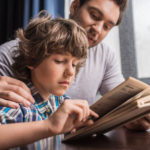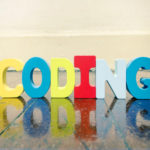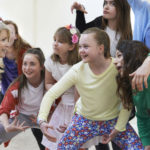What is OLSAT?
OLSAT is an acronym for Otis-Lennon School Ability Test. It is the verbal and non-verbal test that is used by school to test a child’s ability to do learning tasks such as decoding information, listening and following directions, understanding relationships between two or more things (analogies), understanding and solving arithmetic problems, memory skills used to recall information, understanding the logical steps of circumstances (sequences), organizing items according to similarities and differences, and finally, grouping items logically. These activities will especially help schools to determine how well a child is using critical thinking and reasoning skills, which are major components of a child’s success in academic performance.
OLSAT Level A & Erik Erikson’s Developmental Stage Theory
It is specifically used for testing children entering Kindergarten. At this level, the test involves lots of pictures, figures, and patterns. According to Erik Erikson’s developmental stage theory (for 3-5 years old), a child is developing a need to initiate and make decisions, and it often happens in the form of play. A child will make up games, initiate activities and ask questions. Connecting the test with a child’s developmental level: pictures, figures, and patterns create the freedom to initiate thinking and make decisions based on thinking and reasoning. The school uses this as a way to see if a child is ready and can initiate thinking and make decisions based on logic and reasoning.
Why do we connect theory and test?
To understand the connection between a test and a particular developmental stage theory helps an educator or a caretaker or parents to guide a child appropriately. The preparation and the instruction on how to ask and how to say a question is great; however, it is not sufficiently explaining the fundamental reasoning why a facial expression and a body language of the caretaker/parents/ educator, while conducting the test and asking the question, are as important or more important to a child. The theory also helps to make adults understand that in this developmental age, 3-5, a child is building a sense of purpose, and one of the major inhibitory factors in achieving a sense of purpose for a child is guilt and feeling judged. In this age, children ask lots and lots of questions; it is very important for us as adults to either take care of the question carefully or give an explanation that “to answer a particular question is not possible at this time, therefore we need to continue the conversation at another time”. The more precise and clear we are in communicating and interacting with a child, the better help we offer for a child to develop his/her critical thinking andE reasoning skills. The word gifted and talented is not necessarily innate; for the majority, it is built through the ways we guide and introduce a child to the world around through conversation, books, communication, interaction, and structures.
If you are interested in learning about Erik Erikson’s theory, please visit this link: https://www.simplypsychology.org/Erik-Erikson.html
Sample of Books for OLSAT activities…
“Wacky Wednesday” by Dr Seuss
This is an awesome book by Dr. Seuss to read and to have a child explained of what is happening in the book, to have a child predicted of what will happen after and what happened before, to have a child said what should have happened, and if any predictable patterns we could gather from the picture. For example, in one of the pages, the boy is taking shower with one of his socks on; ask your child what is strange from the picture and why it is strange. Ask your child what would happen with the socks and what the boy should have done. Many open-ended questions could be asked from this book. It is good for a child to practice explaining and organizing his/her reasoning and critical thinking skills to create clear explanations.
“Frog and Toad” by Arnold Lobel
Lots of meaningful and funny stories.
Two activities:
1. Print eight pictures from one of the stories and laminate them. Then, you read the story to the child and ask the child to listen to it carefully. When you finish reading the story, ask the child to put the pictures in order according to the starting of the story to the ending of the story, or you can surprise a child by asking to do vice verse, or you can ask a child to start from the middle. The changing of the point of origin enriches your child’s thinking and reasoning skills.
2. Using the same pictures above, make up sentences that describe each picture. Then, ask your child to match the sentence with the picture. You can either read the sentence to the child or you can ask a child to read it on his/her own. You can vary this activity by asking what comes up before or after the sentence and ask a child to find the matching picture. You can also ask your child to make analogies based on the pictures.
By Chandra Budi














Leave a comment